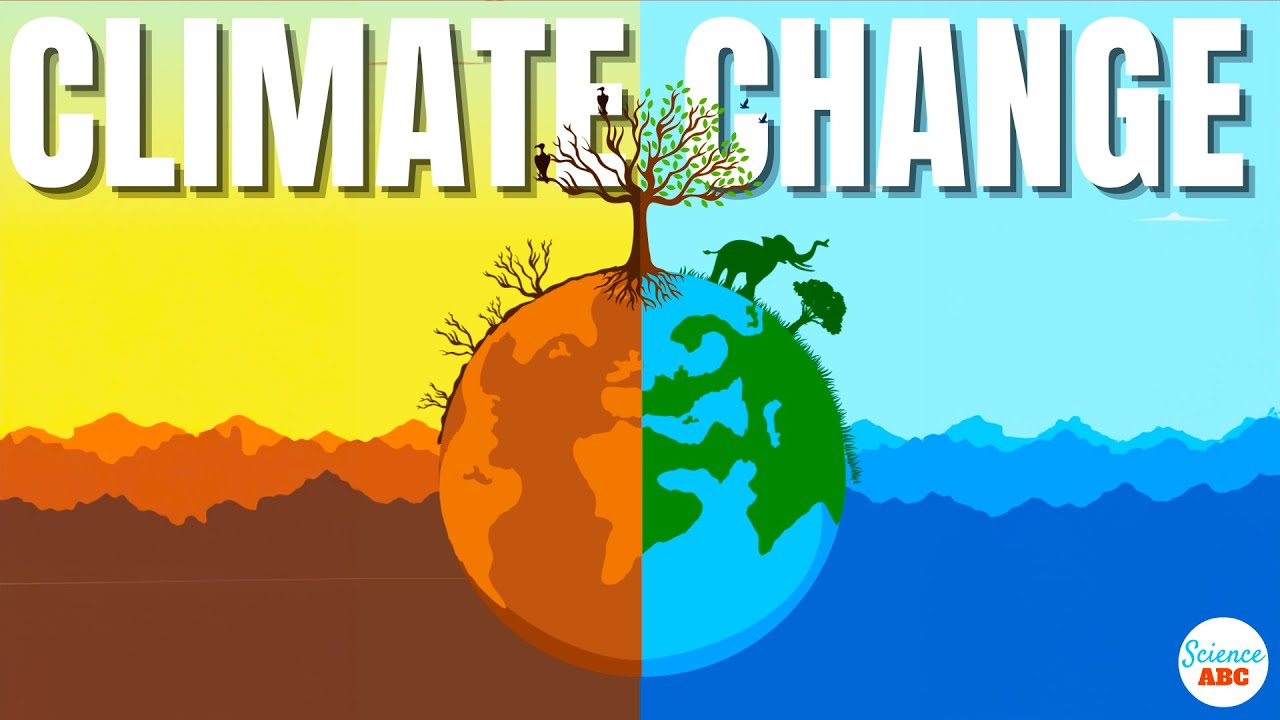Dr Amit Chauhan - Understanding climate change
Summary
TLDRThis discussion on climate change explores the long-term shifts in temperature and weather patterns, highlighting both natural variations and anthropogenic influences. It emphasizes the role of greenhouse gas emissions since the Industrial Revolution in exacerbating global warming and causing severe weather events. Key factors contributing to climate change, such as fossil fuel combustion and deforestation, are examined. The video also presents potential solutions for carbon dioxide reduction and capture, aiming to secure a sustainable future. Overall, it underscores the urgent need for action against climate change to mitigate its impact on health and the environment.
Takeaways
- 🌍 Climate change refers to long-term shifts in temperature and weather patterns, which can occur naturally or be influenced by human activities.
- 🌡️ The Earth's average temperature has increased by about 1°F during the 20th century, leading to significant global changes affecting health and the environment.
- 🔥 The Industrial Revolution marked a major spike in greenhouse gas emissions, primarily from burning fossil fuels, contributing to climate change.
- 🌪️ Climate change leads to more intense weather patterns, including longer droughts, heatwaves, and aggressive hurricanes.
- 🔄 Natural variations in climate are influenced by factors like solar activity, Earth's orbit, and volcanic eruptions.
- 💨 Anthropogenic climate change is directly linked to human-induced emissions from fossil fuel combustion, agriculture, and deforestation.
- 🌱 Greenhouse gases trap heat in the atmosphere, creating the greenhouse effect, which warms the Earth.
- 🔧 There are solutions available to address climate change, such as carbon capture technologies and renewable energy sources.
- 💡 Effective solutions for reducing carbon dioxide emissions include building green structures, utilizing methane lakes, and developing carbon nanofiber webs.
- 🔍 Understanding climate change requires a comprehensive look at its past, present, and future impacts on both global and local scales.
Q & A
What is climate change?
-Climate change refers to long-term shifts in temperature and weather patterns, which can occur naturally or be influenced by human activities.
What are some natural causes of climate change?
-Natural causes include changes in the sun's activity, volcanic eruptions, periodic variations in air and ocean circulation, and alterations in the Earth's orbit and tilt.
How has human activity contributed to climate change?
-Human-induced climate change is primarily linked to the burning of fossil fuels, aerosol release, and land alterations such as agriculture and deforestation since the Industrial Revolution.
What is the significance of a 1°F increase in Earth's average temperature?
-Although 1°F may seem minor, it has significant effects on health and the environment, contributing to longer droughts, heat waves, and more intense hurricanes.
What role do greenhouse gases play in climate change?
-Greenhouse gases trap heat in the atmosphere, leading to the greenhouse effect, where solar energy is absorbed and re-radiated, contributing to global warming.
What are some effects of greenhouse gas emissions?
-Greenhouse gas emissions can lead to increased global temperatures, altered weather patterns, and adverse impacts on human health and the environment.
What are aerosols and how do they affect climate change?
-Aerosols are tiny particles released into the atmosphere that can have both beneficial and detrimental effects on climate and human health, influencing atmospheric processes.
Why is it challenging to transition away from fossil fuels?
-The dependence on fossil fuels for energy is significant, making it economically challenging to switch to alternative energy sources due to maintenance costs and infrastructure considerations.
What are some solutions proposed to address climate change?
-Proposed solutions include developing greenhouse buildings, capturing methane and nitrogen, and utilizing carbon nanofiber webs for carbon dioxide conversion and capture.
What perspectives on climate change were discussed in the presentation?
-The presentation covered the past, present, and future perspectives of climate change, discussing natural variations, anthropogenic impacts, and potential solutions.
Outlines

This section is available to paid users only. Please upgrade to access this part.
Upgrade NowMindmap

This section is available to paid users only. Please upgrade to access this part.
Upgrade NowKeywords

This section is available to paid users only. Please upgrade to access this part.
Upgrade NowHighlights

This section is available to paid users only. Please upgrade to access this part.
Upgrade NowTranscripts

This section is available to paid users only. Please upgrade to access this part.
Upgrade Now5.0 / 5 (0 votes)





